What Are Marketing Objectives?
Marketing objectives are the outcomes a brand wants to generate from its marketing activities. They should be measurable (and realistic) so that you can map out your efforts in a strategic and focused way.
Not to be confused with
marketing goals, your objectives identify
how you’ll know if you’ve reached a goal–i.e. “increase the share of voice by 20% by the end of Q3” (objective) vs “be seen as a leader in the industry” (goal).

Why Marketing Objectives Are Important
Ever tried throwing spaghetti at the wall and seeing what sticks? It usually gets messy. Without marketing objectives, you don’t have any concrete way to steer your marketing ship. As well as giving your team a direction and goal to work towards, they also help you track and
measure whether your efforts are paying off.
On top of this, establishing clear objectives is important for determining which
specific marketing tactics and tasks you’ll execute to achieve them.
When you're ready, you can get your objectives organized with your
free marketing calendar.
The following are examples of 17 goals and marketing objectives you can use in your business.
1. Improve Brand Reputation
Improving the way customers see your brand will lead to better reviews, higher customer satisfaction rates, and a more enjoyable customer experience. The happier customers are, the more repeat purchases you’ll secure, and the higher your long-term revenue will be.
Example Objective: Gain and retain a 90% positive share of voice
by the end of the calendar year so that prospective customers know, like, and trust us.
You can use a social listening tool to track your share of voice.
 Source
Source
2. Increase Brand Presence
The more visible your brand is, the more chances you have to reach potential customers. Increasing your brand presence might look like showing up on different platforms, or posting more on the channels you’re already active on.
Example Objective: Publish 4 articles every month on external sources our target audience follows to increase brand presence.
SaaSlaunchr
ran a guest blogging campaign to dramatically increase traffic to its client’s sites.
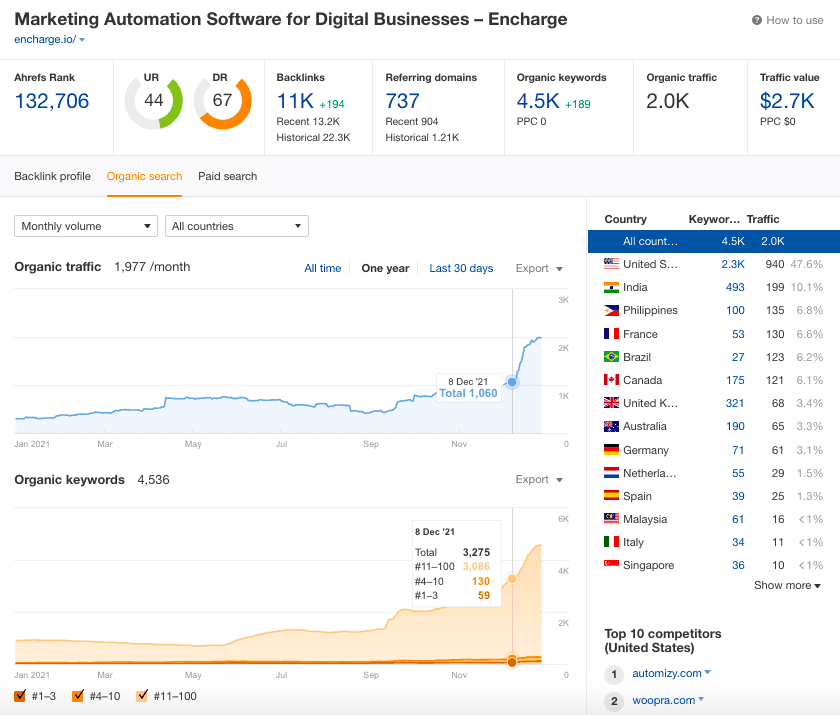
3. Optimize Brand Positioning
Having a clear path forward means knowing exactly who you are and what you want to say. Identifying your position in the market helps you communicate your USP and attract right-fit customers and clients.
Example Objective: Define brand positioning statement and communication frameworks by the end of the month so that our team understands our strategic differentiators from the competition.
Mailchimp’s communication and style guide help them maintain consistent messaging within their market.

4. Increase Traffic
More traffic means more conversions. When you focus on bringing new leads to your website, you can increase your search engine rankings, improve your industry reach, and access more detailed insights.
Example Objective: Test 3 new traffic generation methods every month to increase traffic month over month by 3%.
Google Analytics can tell you which sources are driving the most traffic to your site.

5. Increase Prospect Pipeline
Increasing the number of potential customers you have in your sales pipeline increases the chance of converting a higher number of people into
actual customers. Even adding just one or two new prospects to the mix each month can have a huge impact on your revenue and profit. The more specific you can be with numbers, the better, as it’s much easier to track and measure.
Example Objective:Increase website conversion rates by 2% by the end of Q2 so that we increase the number of prospects in our marketing to sales pipeline from 500 to 510.
TouchBistro used Facebook ads to grow its prospect line to over 135 demos per month.

6. Diversify Lead Sources
Diversifying lead sources means finding new ways to attract and convert customers, whether it’s via social media, paid ads, or guest blogging on external platforms. Doing so helps you reach untouched markets and access customers who might not have found you otherwise.
Example Objective: Test 2 new lead generation sources every month in 2022 to find at least 2 successful methods of generating new demand that we will implement by the end of the year.
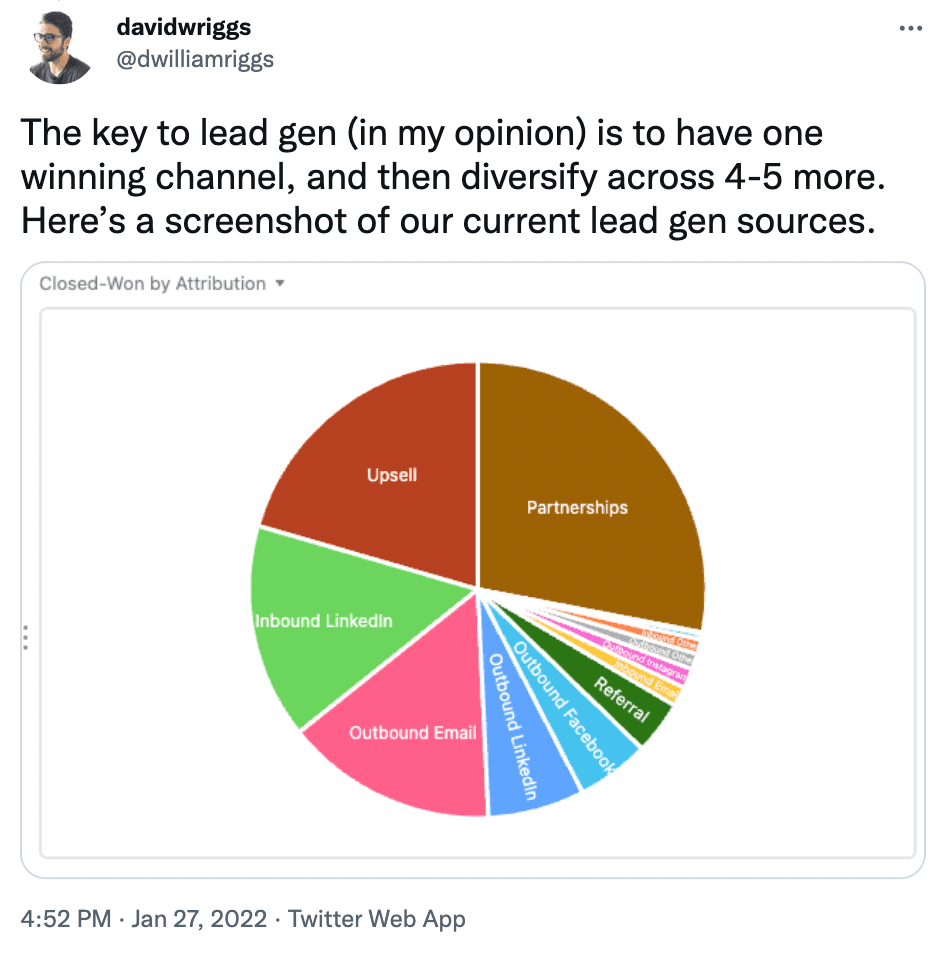
7. Acquire More Prospects From Existing Markets
It’s unlikely you’re tapping out
all the potential leads from your currently active platforms. Experiment with different ways to convert more people who already know who you are or who are already in the pipeline.
Example Objective: Implement content upgrades into every blog post by the end of the calendar year to turn 30% of our website visitors into prospective sales leads.
Shopify has a range of different content upgrades to attract different market segments.
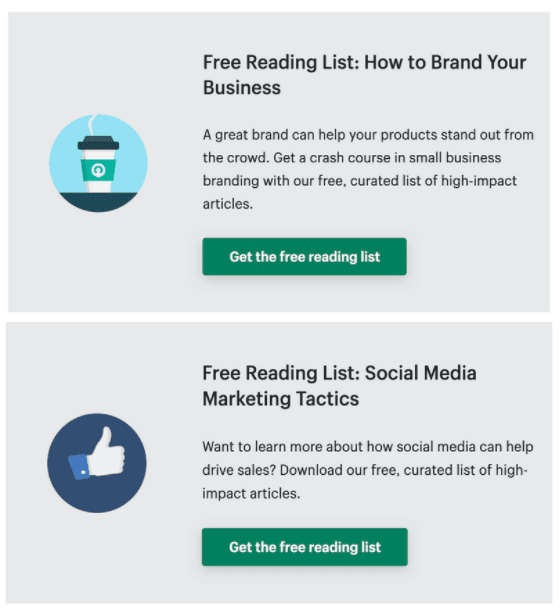
8. Launch Product
Launching a new product can bring a number of benefits to your brand–reaching new customers, improving brand awareness, and solidifying you as one of the top brands in your market. However, there are lots of steps involved in launching a new product, so it’s important that you strategically map them out to hit every milestone.
Example Objective: Define the go-to-market strategy for Product A by the end of the week so that the team can create all content before the launch date.
Eight Sleep partnered up with IFTTT for their go-to-marketing plan that included an initial email, a landing page to educate customers about the new product, and a social media promotion campaign, resulting in wild enthusiasm for the new product.

9. Improve Product Quality
Product quality can impact other areas of your business, including brand reputation and customer satisfaction levels. If you can ensure the quality of your product is as good as it can be, you’ll improve the customer experience and generate more positive reviews.
Example Objective: Launch Product A by the end of the month with zero bugs.
10. Acquire More Customers From Existing Markets
As opposed to acquiring
prospects, acquiring customers involves actually getting people to buy from you. Obviously, the more customers you have, the more revenue you generate, but it also increases brand awareness and your share of the market.
Example Objective: Implement off-site tactics to acquire 5% more customers month over month by the end of the fiscal year.
Trello encourages its existing customers to share their product with their friends and family to grow its user base.

11. Break Into New Markets
Tapping into new markets gives you access to more prospects and helps you create a brand presence in different areas. On top of this, positioning yourself in new markets can separate you from your competitors and ensure you stand out.
Example Objective: Research the competition in Market A by the end of Q1 so that we understand how to differentiate Product A positioning to win new market share.
12. Retain Existing Customers
It
costs 5x more to attract new customers than it does to sell to existing customers, plus those that have already bought from you are likely to keep buying from you and spend more on each purchase. Retaining your best customers is crucial for your bottom line and to secure brand loyalty.
Example Objective: Reduce bugs to zero for every feature launch so that user churn decreases to 3% by the end of Q4.
GrooveHQ managed to
reduce customer churn by 71% by simply defining why customers quit.
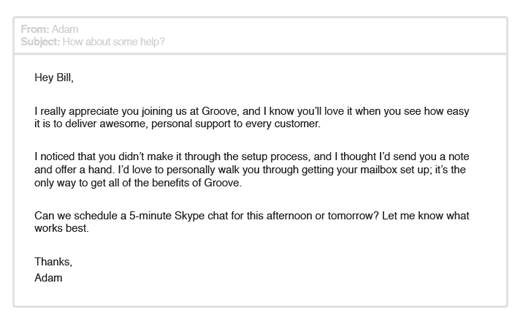
13. Increase Efficiency
Being efficient means you can get more done in less time at (hopefully) a lesser cost. This might include batching tasks so you can create more products, or creating better systems so that you can fulfill bigger orders or target enterprise customers.
Example Objective: Publish 4 blog posts every week by the end of the calendar year.
14. Increase Revenue
Of course you want to increase your revenue–who doesn’t? But, as a marketing objective, you need to dig deeper. Think about how you can increase revenue and what activities you can put in place to drive more sales and get more customers.
Example Objective: Launch 4 new products by the end of the fiscal year to increase revenue.
15. Increase Profit Margin
It’s all well and good generating lots of revenue, but if your profit margins are small, you might be bringing in less than you think. To increase your margin, you might seek out different manufacturers or switch up your product positioning to give customers more value (and can therefore justify charging more).
Example Objective: Improve brand positioning on 10 existing products by the end of the calendar year to increase product value so that we may increase prices for those product lines.
Grammarly encourages its customers to upsell to the Premium package where they can unlock more value (and pay more).
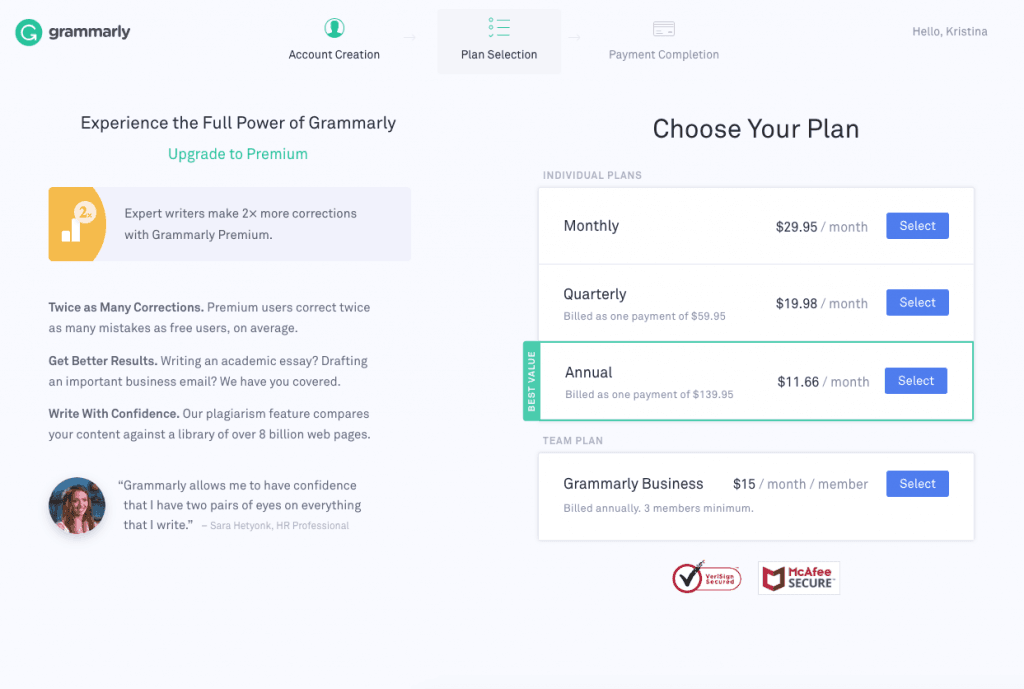
16. Improve Customer Experience
Customer experience is one of the most important parts of business today. Get it wrong, and customers will quickly hop over to a competitor. But what does improving it look like in action? It might mean making the customer support process slicker or creating a simpler onboarding system.
Example Objective: Reduce user experience challenges in Product A to improve net promoter scores (NPS) to 70%+.
Skillcorner
wanted to improve its customer experience, so they created an immersive website that better showcased the product’s software.

17. Increase Customer Advocacy
Your customers are your best marketers. Word of mouth is still an incredibly powerful way to reach new prospects, and getting your existing customers to help out with that will instantly instill trust and credibility in your brand.
Example Objective: Implement a customer ambassador program by the end of the calendar year so that our best customers introduce our product to new prospective customers.
ConvertKit has an affiliate program its best customers can use to earn a little income while
marketing the product.

Tie Your SMART Marketing Goals Into Your Marketing Objectives
Marketing objectives are the overarching outcomes you want to achieve, which you set for your team. Marketing goals are the stepping stones you need to complete to reach your objective.
You’ve probably come across SMART goals before but, just to recap, they should be:
- Specific
- Measurable
- Attainable
- Relevant
- Timely
Your goals should be the specific building blocks that help you reach your initial objectives. For best results, each one should build off the other like this:
 Learn more: How to Set SMART Marketing Goals You Can Achieve
Learn more: How to Set SMART Marketing Goals You Can Achieve
If your
marketing objective is to increase your online conversion rates by 25% in one year, you might set a SMART goal to:
- Increase the ranking of 10 landing pages to the top 3 spots on Google by optimizing them for specific keywords.
- Decrease abandoned shopping carts by 50% over the next 12 months.
If your
marketing objective is to reach more 18-35-year-olds with your brand and product, you might create a SMART goal like:
- Create an active presence on Instagram and Snapchat with each account having over 1,000 followers by the end of June 2023.
- Host a book club with topics aimed to entice our target audience with 2,000 active members by March 2023.
Each of your goals and its parent objective should relate back to your overarching business goal. It’s important to get specific here–use specific numbers, set timelines, and highlight the results you want to see come to life.


 Source
Source












 Learn more: How to Set SMART Marketing Goals You Can Achieve
If your marketing objective is to increase your online conversion rates by 25% in one year, you might set a SMART goal to:
Learn more: How to Set SMART Marketing Goals You Can Achieve
If your marketing objective is to increase your online conversion rates by 25% in one year, you might set a SMART goal to:


